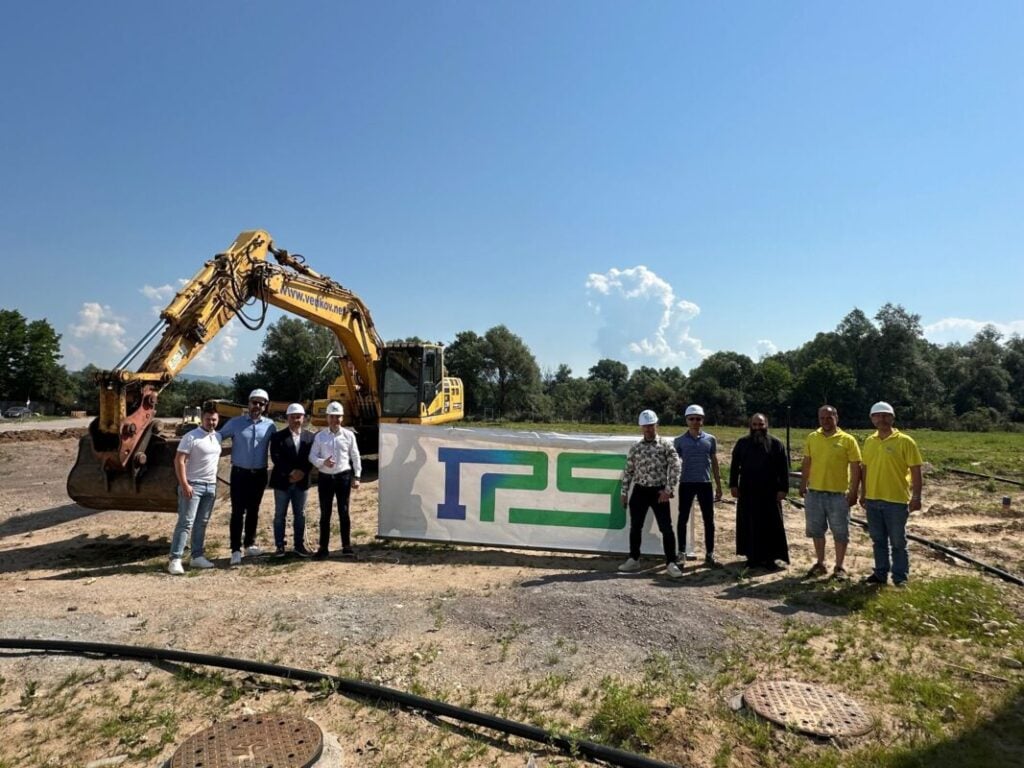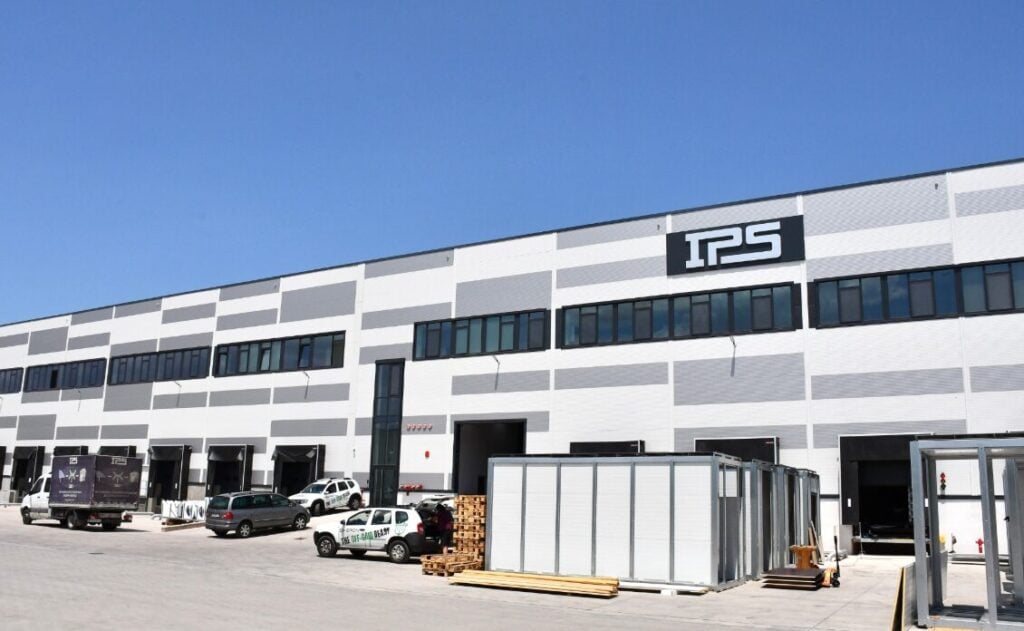

We caught up with the CEO of Bulgaria-based International Power Supply (IPS) to discuss its claimed first mass-scale cell-to-system BESS manufacturing facility in Europe and its ultra-high density 20-foot product.
Alexander Rangelov, who has headed up the company for the last 15 years, said the firm expects demand for European-made BESS to grow substantially in the coming years and IPS is aiming for a 10% market share.
It recently broke ground on a new building adjacent to its existing BESS manufacturing facility near Sofia, Bulgaria, which will bring IPS’ annual BESS manufacturing capacity to 4GWh, including a doubling of its existing facility’s capacity from 1.5GWh to 3GWh by November.
Rangelov discussed what it takes to manufacture competitively in Europe, its approach to BESS design. and more, with Energy-Storage.news. Watch the full video below, and read on for our write-up.
Try Premium for just $1
- Full premium access for the first month at only $1
- Converts to an annual rate after 30 days unless cancelled
- Cancel anytime during the trial period
Premium Benefits
- Expert industry analysis and interviews
- Digital access to PV Tech Power journal
- Exclusive event discounts
Or get the full Premium subscription right away
Or continue reading this article for free
The firm moved into the BESS space with its own technology and large-scale manufacturing from its 36 years of activity in microgrids globally, which often involved BESS, he explained.
Going beyond ‘copy-paste’ approach in the market
“If you look at the products out there in the market, most of them are in a 20-foot shipping container, with a more or less copy-paste design for the battery packs, cooling systems and most other components. We said that this leads to limitations, so let’s start from scratch,” he explained.
“We did our own design, leveraging our experience in off-grid and microgrids, which allowed us to fit more capacity in the same footprint, with inverters inside and our own designed liquid cooling system. We’re not dependent on Chinese parts and ensuing logistics issues.”
The firm launched its latest, liquid-cooled 8.1MWh BESS with 4MW inverter integrated product at the ees Europe trade show in Munich, Germany, in May. The next model will accommodate 10.2MWh in a 20-foot unit with integrated inverters, likely presented next year.
The power conversion system (PCS) and inverter technology is one big aspect that sets its BESS apart from others, Angelov claimed.
Most inverters in the market use IGBT modules for their power conversion process, while IPS’ uses three-level topology and silicon carbide transistors and diodes which allows for a conversion efficiency of higher than 99.5%, he claimed. “This means that we have a very little amount of heat that is released during this power conversion, meaning we can have very small inverters with very little cooling.”
The typical market design also typically only has one compressor for the cooling, which means a single point of failure. IPS’ cooling meanwhile is more spread out throughout the product, allowing for built-in redundancy.
The 8.1MWh unit is modular, made up of seven individual units of 1.17MWh each allowing for transportation in Europe. This is in line with an industry-wide trend of more modular BESS products, some still around the 20-foot form factor and some not, to get around transportation limits.
In fact, while up until 2024 the industry did appear to be converging, arguably commoditising, around the 5MWh 20-foot product design, that trend has now softened, running counter to Rangelov’s ‘copy-paste’ characterisation of the market.
IPS buy its lithium-ion battery cells from China, primarily from CATL and EVE Energy, but the remainder of its components and manufacturing is all in Europe.
Why manufacture in Europe?
Rangelov said there are a few advantages to manufacturing its BESS in Europe.
One is it addresses cybersecurity concerns around Chinese-made inverters and other equipment which can be controlled remotely. These, Rangelov claimed, have risen since the Iberian blackout even though the government of Spain categorically ruled out a cybersecurity attack as the cause. Shortly after it Reuters reported that US authorities found rogue devices in some Chinese solar inverters, as reported by our colleagues at PV Tech.
He pointed to the European Commission and NATO starting to draft guidelines to limit prevent potential cybersecurity risks related to ‘active equipment’, i.e. equipment which can be remotely controlled. He aso cited the US Department of Defence (DOD) banning the purchase of batteries from Chinese suppliers alleged to have ties either to China’s military or truling Communist party, which affects many of the largest ones including CATL.
“I do believe that Europe will have to follow this, though they cannot do it completely and as fast as the US because the European industry is not in the position to replace that capacity.”
Another advantage is around the ability to offer a stronger spare parts and after-sales service, Rangelov said.
Being competitive with China
But more importantly, how do you stay cost-competitive with manufacturers from China that have scaled in batteries and BESS at a level far, far beyond anywhere else, and which have been reportedly subsidised by the Chinese government?
Rangelov said the product’s design and manufacturing process which goes all the way from cell to module and pack assembly through to BESS integration is cheaper than what other European BESS manufacturers are doing.
“There are other European companies that call themselves manufacturers but what they do is buy packs, buy containers and buy inverters and assemble them together. So you pay the price for each of those components. It’s not possible to be competitive without the cost-effective design from the beginning. Our design is also welding-free, which reduces costs further.”
Labour costs in Bulgaria are also relatively low and the company’s move to a 10GWh, more automated facility, also helps with costs, he added.
There is around 12-15GWh of annual BESS manufacturing capacity in Europe, but IPS’ is the first that is cell-to-system, he said.
Manufacturing labour force
Alongside the upcoming 4GWh of production capacity the firm will soon have, it is in the design phase for a more automated, 10GWh facility elsewhere in Bulgaria.
Its current BESS manufacturing facility needs around 30 people per GWh of annual capacity. BESS assembly is currently a very manual process. However, the 10GWh automated site will only need around 45 people, reducing that people-per-GWh figure by around 85-90%.
Rangelov said that the manufacturing processes for BESS are designed in a way that you don’t need a specialised workforce to do it. The only zone where you need deep electrical expertise is for the final testing of the finished products.
Route-to-market
The firm appears to be positioning itself primarily as an equipment OEM rather than system integrator, with Rangelov saying it will partner with engineering, procurement and construction (EPC) firms in order to gain market share.
“We are mainly targeting the European market, our main target group is EPC companies. Spain, Italy, the UK, they are all putting a lot of meaning on European-made, guaranteed availability of spare parts, after sales service etc. There are discussions around sub-Saharan Africa where the grid is often compromise.”
“And don’t underestimate the market in Ukraine. Its destroyed electrical grid cannot be rebuilt in the next 5-10 years. I do believe the utility-scale BESS systems with grid-forming functionality in microgrids will be significant there.”
